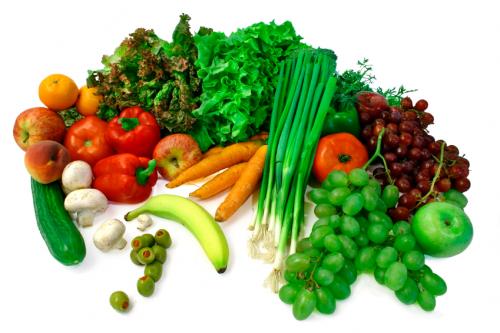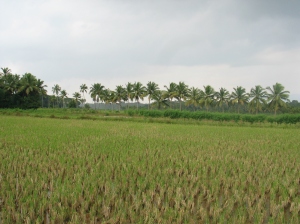
Vivek Kaul
“God,” they say, “is in the details”. And so is the devil.
The wholesale price inflation(WPI), one of the ways to measure the rise in prices, touched 4.86% for June 2013. In May 2013, WPI had stood at 4.7%.
The worrying factor was that food inflation increased to 9.74%, due to an increase in price of onions, cereals and rice. During May 2013, food inflation was at 8.25%.
While an overall inflation of less than 5% sounds like a good situation to be in, it clearly is not, because of the high food inflation that prevails (I bought tomatoes at Rs 60 per kg yesterday evening and that hurts).
The point to remember here is that overall inflation is a theoretical construct where various goods and services have a certain weight attached to them. Food articles comprise of around 14.34% of the WPI basket. What this means in simple English is that if an individual were to spend Rs 100 on goods that comprise the WPI basket, he would spend Rs 14.34 on buying food.
But for most people the proportion of money they spend on food is higher than 14.34%. A discussion paper titled Taming Food Inflation in India released by the Commission for Agricultural Costs and Prices(CACP), Ministry of Agriculture, on April 1, 2013, makes the point. “An average household in India still spends almost half of its expenditure on food, and poor around 60 percent (NSSO, 2011), and that poor cannot easily hedge against inflation, high food inflation inflicts a strong ‘hidden tax’ on the poor…In the last five years, post 2008, food inflation contributed to over 41% to the overall inflation in the country,” write the authors Ashok Gulati and Shweta Saini. Gulati is the Chairman of the Commission and Saini is an independent researcher.
This means that rising food prices are a huge problem for most Indians. Vegetable prices went up by 16.47% in June vis a vis 4.85% in May. Onion prices went up by a whopping 114% against 97.4% in May. Price rise in cereals and rice was 17.2% and 19.1% respectively.
While each food product has its own reasons for the price rise, there are some broad generalisations that can be made. Take the case of rice and wheat. Their price rise can be directly attributed to hoarding by the government.
In a research paper titled Buffer Stocking Policy in Wake of NFSB (National Food Securities Bill) Ashok Gulati and Surbhi Jain of CACP point out “The country is currently loaded with large stocks. On July 1, 2012, e.g., it had 80.2 million tonnes, and is likely to have similar or even higher amount this year, despite emerging as the largest exporter of rice (around 10 million tonnes in calendar year 2012) and exporting about 5.6 million tonnes of wheat in FY 2012‐13.”
The situation seems to have continued this year as well. The food grain stock as on April 1, 2013, stood at 59.8 million tonnes against the norm of 21.2 million tonnes, that the government needs to maintain as on April 1, of every year.
One explanation for the hoarding is that the government was building up stocks to implement the food security scheme. But even after taking that into account, the government is hoarding onto more rice and wheat it requires to sell at subsidised rates. The CACP report estimates that anywhere between 41-47 million tonnes, would be a comfortable level of buffer stocks. This would be enough to take care of the subsidised grain that needs to be distributed to implement the food security scheme. At the same time it would also take care of the strategic reserves that the government needs to maintain, to be ready for a drought or any other exigency.
As on July 1, 2013, the government is expected to have around 82 million tonnes of rice and wheat. What this means that the government has an excess stock of nearly 30-40 million tonnes. As Gulati and Jain point out “The value locked in these “excess stocks”, evaluated at their economic cost, ranges from Rs 70,000 crore to Rs 92,000 crore. This infusion of “excess” money into the economy without corresponding flow of goods is evident in the paradox of rising prices of rice & wheat amidst overflowing stocks in government godowns.”
The excess storage by the government causes inflation in two ways. There is lesser rice and wheat available in the open market, and this pushes up prices. In the last few years, the government has been buying and hoarding more and more of rice and wheat produced. In 2006-2007, the government bought 32% of the total rice paddy produced. In 2011-2012, this had shot up to a massive 54%. During the same period the procurement of wheat more or less doubled, from 18% to 35%. As a a report brought out by the Comptroller and the Auditor (CAG) General of India points out “The total food grains stock in the Central Pool recorded an increase of 45.8 million tonnes between 2006-07 and 2011-12.”
In some states the procurement of grains has more or less been quasi nationalised. In states like Punjab, Haryana and now Madhya Pradesh and Chhattisgarh, around 80‐90% of the rice and wheat produced is bought by the government. This means the amount of rice and wheat available in the open market has come down dramatically and which in turn has pushed up prices.
The second reason for inflation is the fact that the farmers have already been paid anywhere from Rs 70,000-92,000 crore for the excess stocks that the government chooses to maintain. When this money is spent it leads to more money chasing the same number of goods and products, and thus adds to inflation.
In fact, high food inflation isn’t a recent phenomenon. It has been a regular part of our lives since 2008, when the Congress led UPA government decided to get ready for the 2009 Lok Sabha elections and go on a spending spree. During the period 2008-2009 to December 2012, the food inflation averaged at 10.13% per year. It has more or less continued at same levels since then.
The rise in expenditure of the government hasn’t been met by a rise in revenues and has thus led to an increase in fiscal deficit. Fiscal deficit is the difference between what the government earns and what it spends. The fiscal deficit of the Indian government in 2007-2008 (the period between April 1, 2007 and March 31, 2008) stood at Rs 1,26,912 crore. This jumped by 230% to Rs 4,18,482 crore, in 2009-2010 (the period between April 1, 2009 and March 31, 2010). It has since jumped to even higher levels and for the 2013-2014(i.e. The period between April 1, 2013 and March 31, 2014) it is projected to be at Rs 5,42,499 crore.
And it is this increased expenditure(reflected in the burgeoning fiscal deficit) of the government that has led to inflation. As Gulati and Saini point out “Indian fiscal package largely comprised of boosting consumption through outright doles (like farm loan waivers) or liberal increases in pay to organised workers under Sixth Pay Commission and expanded MGNREGA(Mahatma Gandhi National Rural Employment Guarantee Act expenditures for rural workers. All this resulted in quickly boosting demand.”
The sudden increase in government expenditure meant more money landing up in the pockets of citizens. And this money was spent leading to an increase in demand for goods and services. But this increase in demand could not be met with an increase in supply because of several infrastructure bottlenecks. As Gulati and Saini write “But with several supply bottlenecks in place, particularly power, water, roads and railways, etc, very soon, ‘too much money was chasing too few goods’. And no wonder, higher inflation in general and food inflation in particular, was a natural outcome…This study finds that the pressure on prices is more on protein foods (pulses, milk and milk products, eggs, fish and meat) as well as fruits and vegetables, than on cereals and edible oils, especially during 2004-05 to December 2012. This normally happens with rising incomes, when people switch from cereal based diets to more protein based diets. ”
Food inflation has now become a way of life for Indians, and is unlikely to go away any time soon. Even with that the government can look to at least control the rise in price of rice and wheat by trying to sell the excess stocks that it is hoarding onto. In fact, the irony is that the government doesn’t have enough space to store all the rice and wheat it is hoarding. The total storage capacity available is around 71.9 million tonnes. Now compare this to the total expected food grain stock of around 82 million tonnes as on July 1, 2013. What this means is that nearly 10 million tonnes of food grain is rotting in the open.
It is not rocket science to suggest that at least this stock can be sold off. It is always better if people eat rice and wheat, rather than the government letting it rot.
The article originally appeared on www.firstpost.com on July 16, 2013
(Vivek Kaul is a writer. He tweets @kaul_vivek)
 The Cabinet Committee on Economic Affairs (CCEA) has decided to increase the minimum support price (MSP) of rice by Rs 50 per quintal or 3.8% to Rs 1360, for this year. The MSP is the price at which the government buys rice from the farmers, through the Food Corporation of India(FCI) and other state government agencies.
The Cabinet Committee on Economic Affairs (CCEA) has decided to increase the minimum support price (MSP) of rice by Rs 50 per quintal or 3.8% to Rs 1360, for this year. The MSP is the price at which the government buys rice from the farmers, through the Food Corporation of India(FCI) and other state government agencies.